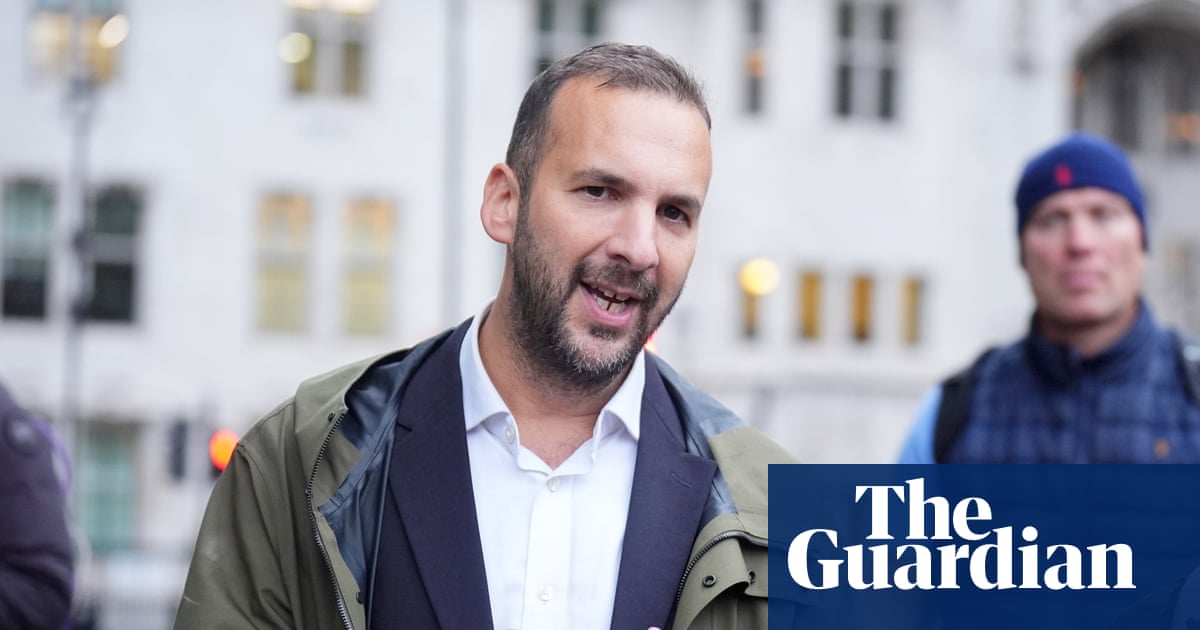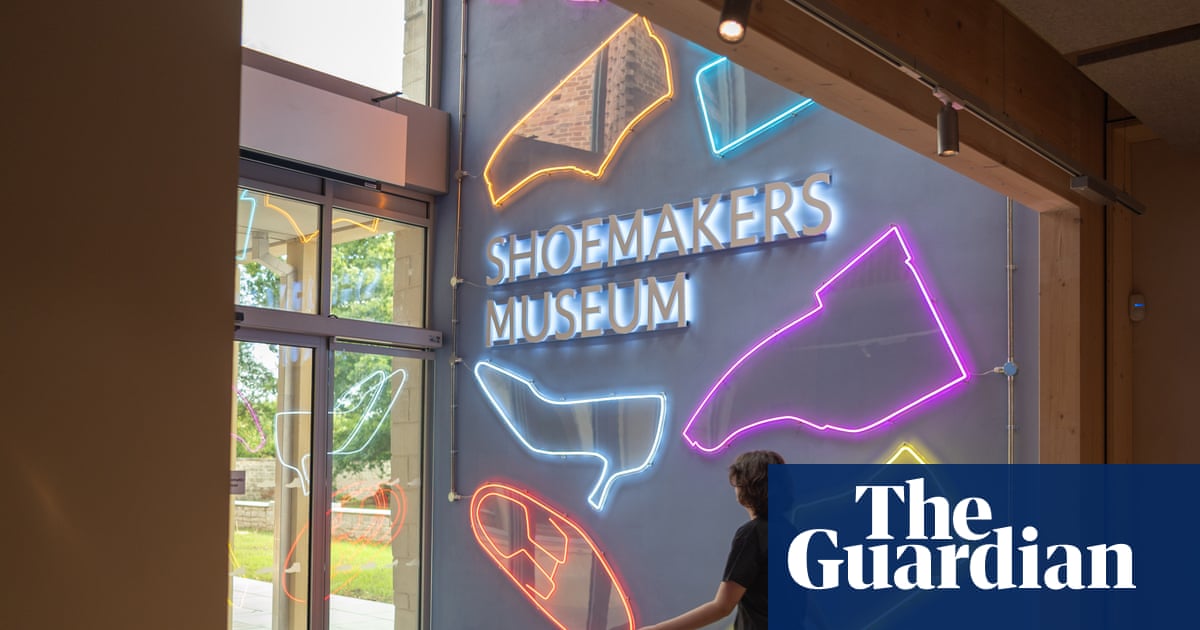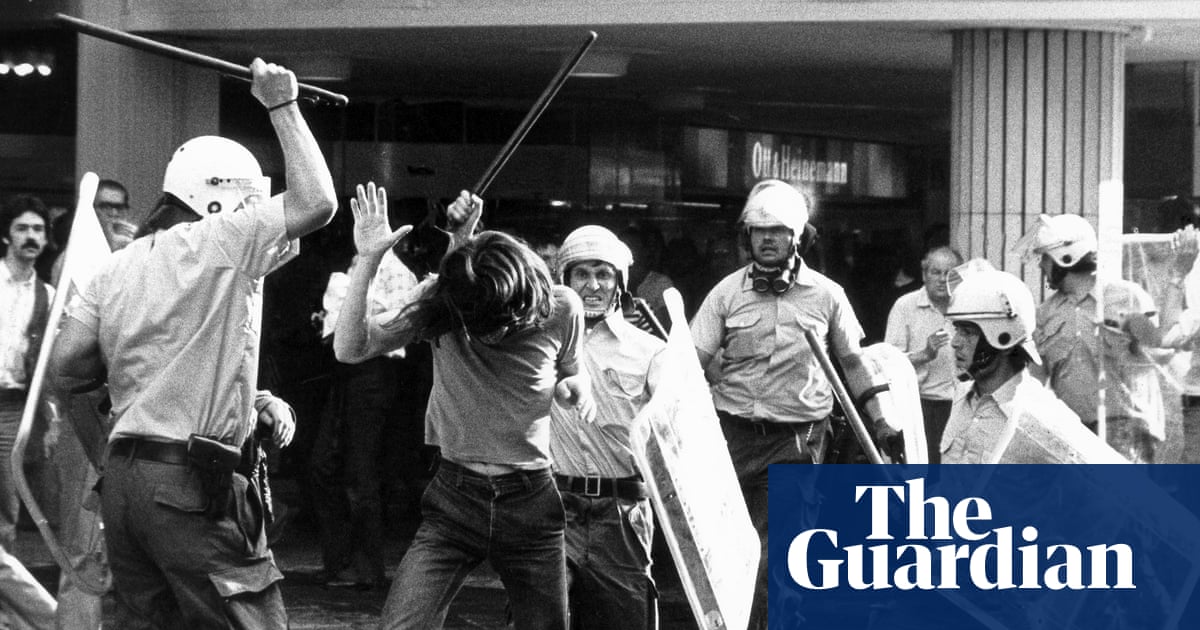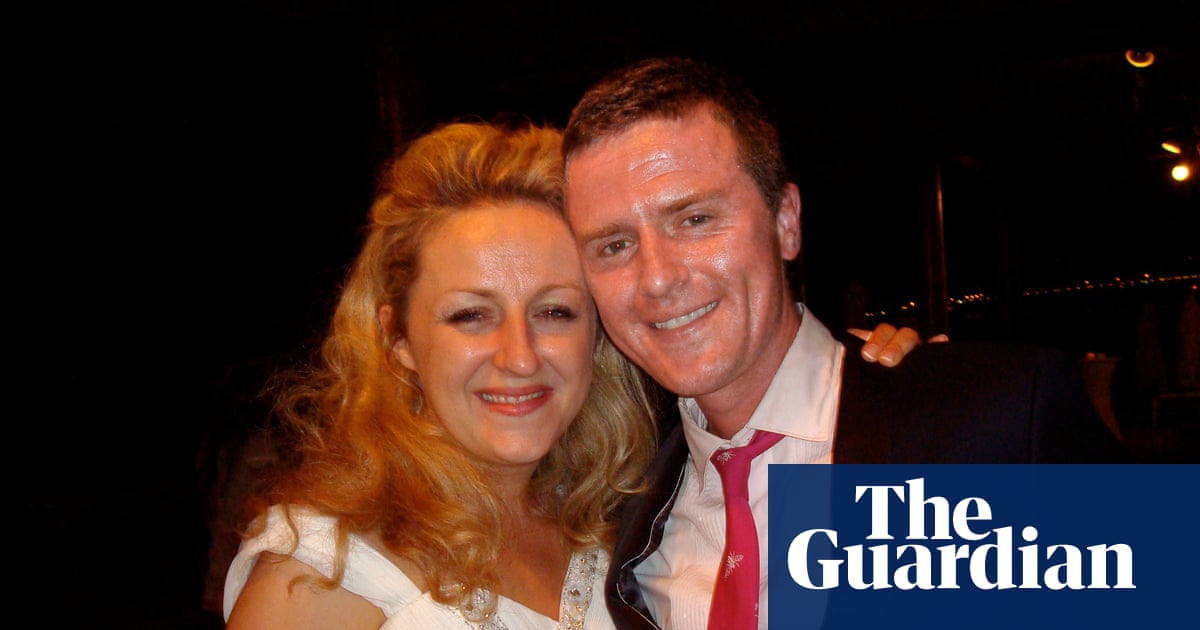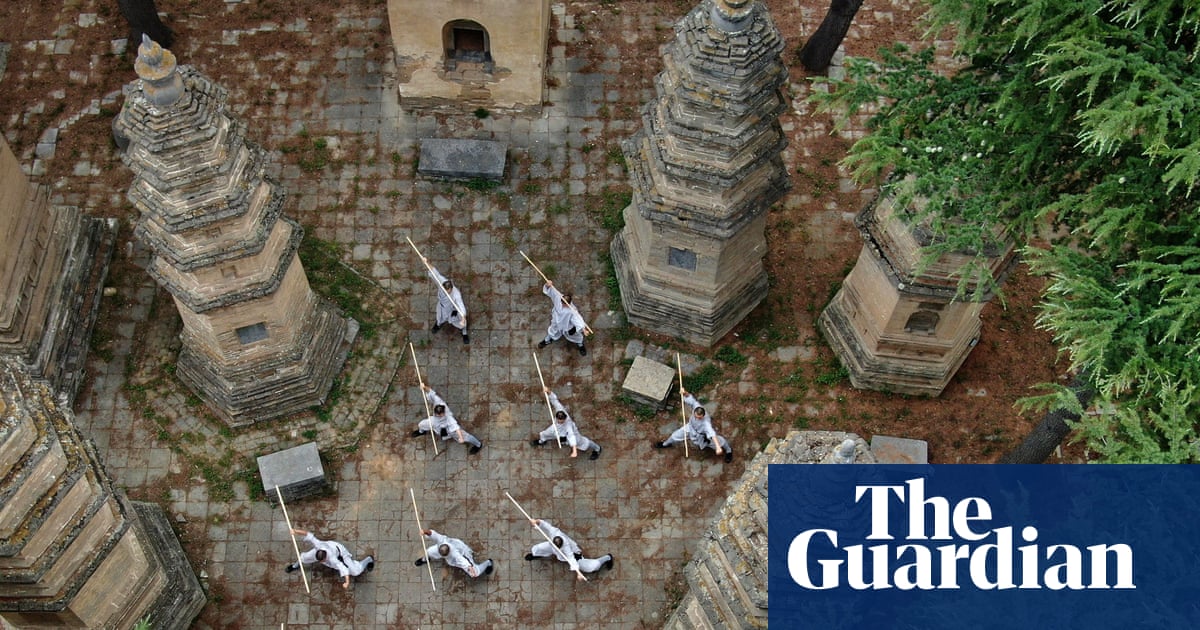Along a flat coastal highway in south-east Texas, surrounded by wetlands and open plains, the artefacts of a new American oligarchy appear in quick succession. Three towering rockets stand upright on the horizon. A fleet of Tesla Cybertrucks speeds by. A large mural of the Shiba Inu “doge” dog stares ahead, its arms crossed. There is a 12ft-tall bust of the world’s richest person, painted in bronze, facing a dusty roadside. “ELON aka MemeLord”, a plaque beneath reads. It’s not exactly romantic poetry, but the whole scene reminds me of the sonnet by Shelley: “Look on my Works, ye Mighty, and despair!”
While old Ozymandias may have seen his fiefdoms crumble, Elon Musk’s empire is possibly only just beginning. Here in Cameron County, on the southern tip of the Lone Star state, where Google Maps proudly displays the newly declared “Gulf of America” just offshore, Musk has situated his self-described mission to save humanity and populate Mars. Just a few miles from his painted bust is the Starbase industrial complex, a rocket-manufacturing facility and launch arena, which commands the vista for miles. It is also the site of the multibillionaire’s latest venture to acquire even more political power.
Fresh from an extended stay in Washington as the de facto leader of the government-slashing, conflict-of-interest-riddled, so-called “department of government efficiency” (Doge), Musk has returned in time to see Starbase become its own city. We are here shortly before the vote, where there is little doubt that the 280 eligible voters (the vast majority of whom are employed by or connected to Musk’s space exploration company SpaceX) will approve the incorporation of a new, 4 sq km (1.6 sq mile) municipality.
There remain many questions about why the company, which did not respond to any of my written questions and interview requests, would move for such recognition. It brings limited local powers, including the ability to impose minor property taxes and grant building permits, as well as the mandate to create its own fire department and – to some alarm – police department. And yet, as the US lurches further into what many describe as an era of norm-shattering digital dystopia under the second presidency of Donald Trump, the goings-on here, in this remote enclave by the US-Mexico border, already bring a sense of grizzly prescience.
As we pull off the highway into the Starbase neighbourhood (Boca Chica village, before the vote), we are trailed almost instantly by two white security trucks with flashing yellow lights. We drive along the main residential drag, where dozens of shiny, silver Airstream trailers – housing for SpaceX staff – sit in neat symmetry. We pass the newly renamed “Memes Street” (formerly it was Weems Street), marked with a black street sign accompanied by a small image of Musk’s pioneering Starship rocket.
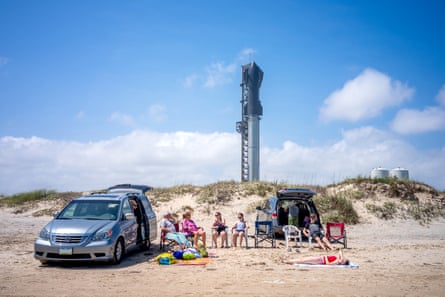
On the adjacent LBJ Boulevard, lined with modest homes and customised Cybertrucks parked outside, we pass what is reportedly Musk’s personal residence, a small bungalow winged by a high black fence. As I get out, I chat with the security guard who has trailed us for the past five minutes. He informs me with a smile that while the roads may be public, if I step on to the front lawns of any of the homes, he’ll seek to have me arrested. “It’s private property,” he says.
Time to leave.
While downtown Starbase may be a little averse to visitors, it’s a different story in the ranchlands outside. Musk founded the facility in late 2014, and its rapid expansion in recent years has drawn a small platoon of Mars obsessives to the area. A few miles away from the production site, at a staging location seen in the distance, a Starship rocket is preparing for a static engine test. Clouds of vapour cascade from the 170ft vehicle, and small groups of awestruck spectators congregate at intervals on the roadside.
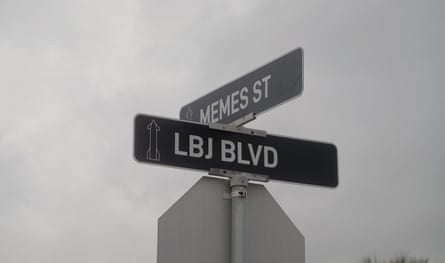
Many are livestreamers and photographers who document the minutiae of Starbase’s activities in extraordinary detail; surveying the serial numbers of components, the progress of launchpad construction and the particulars of planning documents, to assess when the next Starship launch is likely to take place.
“When you’re standing here it’s a weird combination of the wild, wild west and the brand new future,” says a livestreamer named Caesar G, who works for an independent YouTube channel called NASASpaceflight, which has 1.32 million subscribers. He’s focusing a long lens camera on the testing taking place a few miles away, arms flailing with excitement.
“Take the politics out of everything,” he says. “This is the coolest thing that’s going on, engineering-wise. We are catching rockets!”
While there is no doubt that the midair mechanical capture of a 232ft rocket booster, as happened here first in October of last year, is an extraordinary technological achievement, I do wonder how it is possible to distinguish it from politics, given the company’s owner is also accused of making a fascist salute during Donald Trump’s second inauguration.
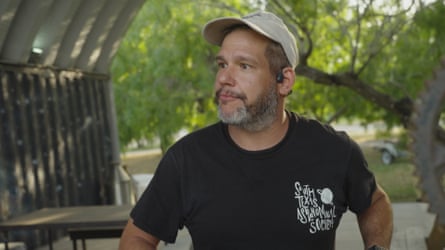
Shaun Gisler, a self-described “aerospace histographer”, who is also livestreaming at the roadside, chimes in on this point. “He’s accused of a lot of things,” Gisler says. “A lot of that is just white noise. I’m looking at the result out here and I’m seeing success. We’re hoping this gets to a point where it becomes so big, it helps bridge the [political] gap.”
The full engine test does not happen for another five hours, but both men are committed to waiting out in the humidity to film it.
We drive a little farther inland to meet with Anthony Gomez, a manager of the Rocket Ranch campground, which caters to hundreds of travelling space tourists every year. Gomez moved here in 2021, abandoning his life in Florida to witness what he believes are the beginnings of a programme that will save humanity.
We head to a viewing platform which commands an uninterrupted view of the launchpads and is fronted by a fire trench designed to protect visitors in the wake of a catastrophic rocket explosion. He wells up describing the feeling of watching a takeoff here. “Every cell and molecule is shaking with some form of elation,” he says. “It is overwhelming. It’s the apex of human technology. And when that thing takes off, somehow that is communicated. Somehow that information is delivered into your heart.”
At the ranch, a cabin displays fragments of recovered Starship debris, and a large mural recreates Michelangelo’s ‘The Creation of Adam’, replacing God’s finger with one belonging to a Tesla humanoid robot named Optimus. We are meeting just days after a federal budget proposal by the Trump administration advances crippling cuts to low-income housing assistance while greenlighting a $1bn investment in Mars programmes, which is likely to benefit Musk.
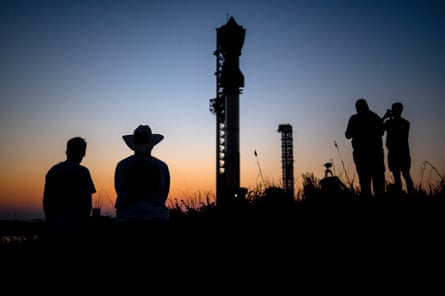
Gomez, who does not identify as a Trump supporter, is unfazed by the apparent cronyism, arguing that homelessness is “the average human’s responsibility”, not that of the government. Plus, he argues, space exploration may one day allow us to retrieve gold- and platinum-encrusted asteroids to cure global poverty. “There are asteroids floating around in space that can make the entire world wealthy,” he claims. He acknowledges that the technology to receive such a planetary boon is probably centuries away, but argues that the new private space race should “give people a focus of hope”.
It can be hard to unpick the politics here; a mixture of right-leaning libertarianism that feels largely mainstream, and visions of a tech utopia that seem more grounded in science fiction than reality. “If you want to take people to Mars, it’s going to include everyone on Earth,” Gomez says when I ask about Musk’s clear nods to white nationalism. “Why would you have any specific hate towards anybody?”
after newsletter promotion
There are, of course, many expert scientific critics of Musk’s highly ambitious Mars plan, which has humans reaching the planet before the end of this decade. How would astronauts be protected from cosmic radiation during the journey and while exploring the red planet? How would Starship refuel for a return trip? Can SpaceX even get Starship to orbit Earth in the first place? (The last two launches have ended in explosive failure.)
But perhaps the most pressing question is why humanity would want to spend trillions of dollars on such a project while pervasive crises on Earth persist. You don’t need to look far in Cameron County to see this rammed home. This is a low-income, majority Latino community of just over 400,000 people, where almost a quarter of residents live below the poverty line.

In the county’s main population hub, Brownsville, disdain for the Starbase facility and its impending city status seems to be the predominant view. While Musk’s foundation has made charitable donations to the local school system and downtown revitalisation efforts, many people I speak to have seen little positive impact. Some complain that their homes shake during launches. Others say that the arrival of heavy industry has beaten up the county highways with little sign of repair. More object to ongoing gentrification.
Josette Cruz, a local organiser and lifelong Brownsville resident, points to soaring housing costs associated with an influx of new residents tied to SpaceX expansion and increased tourism. Her rent, she says, has risen from $725 a month to an almost unaffordable $1,000 in just a few years. Realtor signs now spring up in her neighbourhood with images of cartoon rockets.
“The fact that people can come here and say, ‘We’re going to have our own election, we’re going to build our own town’, what kind of mentality says that, if not one that is rooted in a colonial, settler mindset?” she says, shrugging. “They want to go to Mars to colonise it.”
We take a trip back out past the Starbase facility to Boca Chica beach, a public state park just a few hundred feet from the Starship launch pads. The juxtaposition here is stark. Warnings not to disturb the nesting grounds of the critically endangered Kemp’s ridley sea turtle are stationed across the beach entrance, framed by the giant launch pads and frantic construction work just metres away. In September last year SpaceX was fined almost $150,000 by the Environmental Protection Agency for spewing hundreds of thousands of gallons of polluted wastewater on to the surrounding wetlands after rocket launches. It is a charge the company has continued to deny.
We meet local environmentalist Bekah Hinojosa, who in 2022 was arrested by local police over alleged involvement in the graffiti found on a Musk-sponsored mural in Brownsville. The three words, written in blue, read: “gentrified stop spaceX”. Hinojosa was apprehended in her pyjamas after plain-clothed officers arrived at her doorstep. Three years later, having pleaded not guilty to a class three misdemeanor, she is still awaiting a trial date.
Like many generational residents, Hinojosa’s family have visited this beach for decades, coming to fish at the shoreline and enjoy the tranquillity. But every launch now means a beach closure, and many fear the incorporation of Starbase city will lead to further restrictions on access. “Using a low-income community for experimental rocket testing is another example of environmental racism,” she says, as a group of sandpiper birds paddle in the surf nearby. “Billionaires should not own a beach. We will continue speaking up because, for us, it’s about continuing to exist here.”

Just coming down to the water’s edge can now feel like an act of resistance, it seems.
The morning of the Starbase vote brings with it dark skies and torrential rain. We make a final trip to the complex and stand in the drizzle outside the polling station. It’s a cafeteria open only to SpaceX employees, but a small huddle of journalists seems to keep the security guards away this time.
Most voters say they have been told by their employer not to talk to the press. But a stroke of luck allows us to meet one of the handful of residents who cast a ballot in opposition. She is one of the few hold-out residents, still living in a privately owned home on Memes Street. I can only imagine what it must be like to have your permanent address changed to a sophomoric joke.
“I was here before SpaceX and I have no loyalty issues,” she says after casting her ballot and declining to be named. I ask how she feels about populating Mars. She grimaces and walks away.
The vote ends up passing by a majority of 212 to six. A 97% margin. The city’s new mayor, Robert Peden, is a SpaceX vice-president. He ran unopposed. Three days later the Federal Aviation Authority, an agency previously purged by Doge, approves an aggressive new SpaceX flight programme that will allow the company to quintuple its annual launches from five to 25.
The next Starship is scheduled to take off later this week. Its hulking steel shell glistens in the rain as we drive away.

 3 months ago
212
3 months ago
212
